When it comes to brewing coffee, the choice between Pour Over and French Press can significantly impact the flavor profile of your cup. The Pour Over method is known for its ability to enhance clarity and brightness, while the French Press offers a rich, full-bodied experience. Understanding the differences in brewing techniques and their effects on flavor can help you select the method that best suits your taste preferences.

Which Brewing Method Enhances Flavor: Pour Over or French Press?
The Pour Over method enhances clarity and brightness in coffee, while the French Press method delivers a full-bodied taste. Each brewing technique brings out different flavor characteristics, making the choice dependent on personal preference and the type of coffee used.
Pour Over emphasizes clarity and brightness
The Pour Over brewing method involves pouring hot water over coffee grounds in a filter, allowing for a clean extraction. This process highlights the coffee’s acidity and intricate flavors, resulting in a cup that is often described as bright and crisp.
To achieve optimal results, use a medium grind and water temperature around 90-96°C. The brewing time typically ranges from two to four minutes, depending on the coffee type and desired strength.
French Press delivers a full-bodied taste
The French Press method steeps coffee grounds in hot water, allowing oils and fine particles to remain in the brew. This results in a rich, full-bodied flavor that many coffee enthusiasts appreciate for its depth and complexity.
For best results, use a coarse grind and water temperature around 92-96°C. The steeping time should be about four to five minutes, which allows for a robust extraction of flavors.
Flavor profiles vary by coffee type
The flavor profiles of coffee can significantly change based on the brewing method and the type of coffee beans used. Light roasts tend to shine in Pour Over, showcasing floral and fruity notes, while darker roasts often benefit from the French Press, emphasizing chocolatey and nutty flavors.
Experimenting with different beans and brewing methods can enhance your coffee experience. Consider trying single-origin coffees with distinct flavor notes to see how each method affects the overall taste.
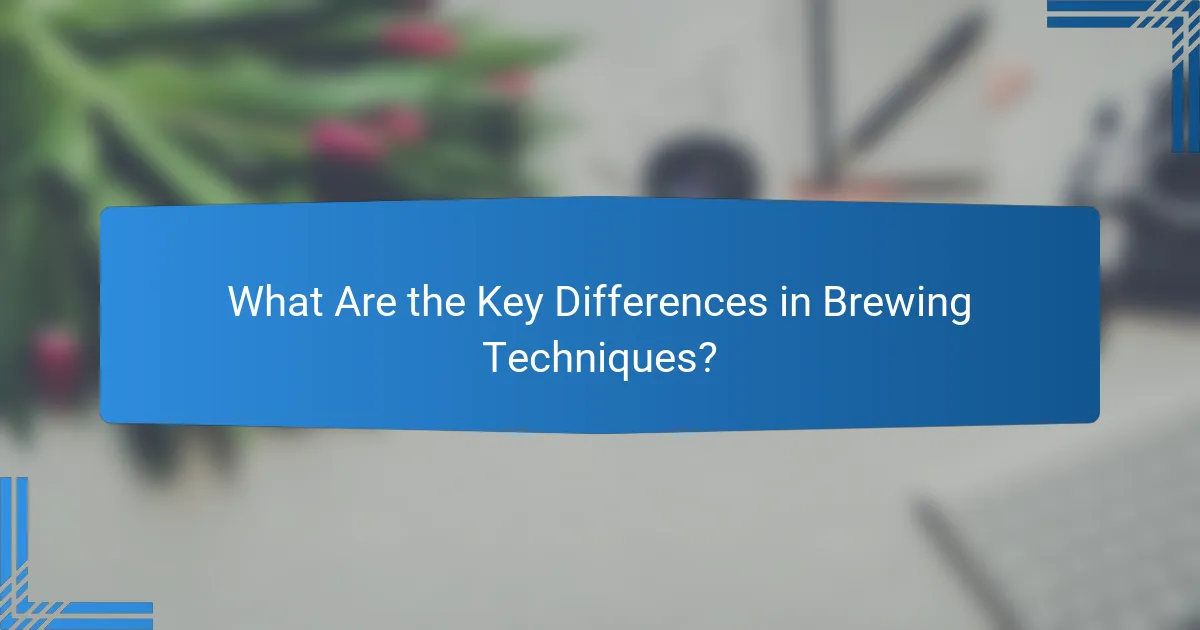
What Are the Key Differences in Brewing Techniques?
The key differences in brewing techniques between Pour Over and French Press lie in the methods used to extract flavors from coffee grounds. Pour Over emphasizes control over water flow and timing, while French Press relies on steeping and pressing to brew coffee.
Pour Over requires precise pouring and timing
Pour Over brewing involves manually pouring hot water over coffee grounds in a filter. This method allows for precise control over the water temperature and flow rate, which can significantly influence the flavor profile of the coffee. A typical brewing time ranges from two to four minutes.
To achieve the best results, use a gooseneck kettle for accurate pouring and aim for a coffee-to-water ratio of about 1:15. Common pitfalls include uneven pouring and using water that is too hot, which can lead to over-extraction and bitterness.
French Press involves steeping and pressing
French Press brewing consists of steeping coarsely ground coffee in hot water for several minutes before pressing down a plunger to separate the grounds from the liquid. This method typically requires a steeping time of around four to five minutes, resulting in a rich and full-bodied flavor.
For optimal extraction, use a coffee-to-water ratio of approximately 1:12. Avoid steeping for too long, as this can lead to a gritty texture and overly strong taste. Ensure the plunger is pressed down gently to prevent coffee grounds from escaping into the brewed coffee.
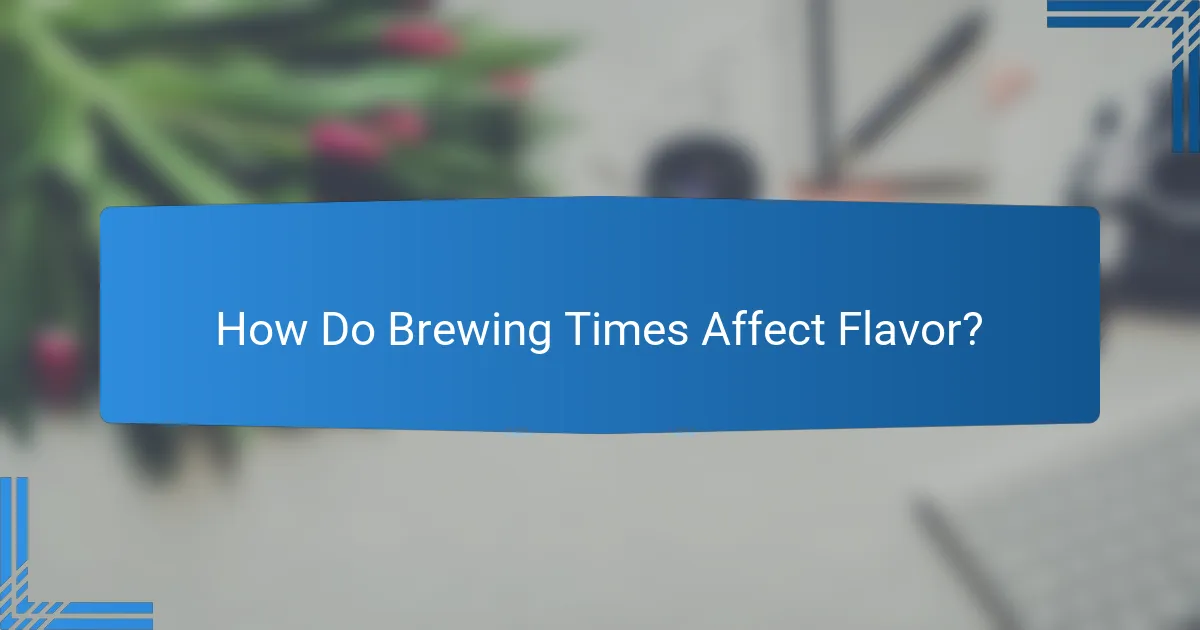
How Do Brewing Times Affect Flavor?
Brewing times significantly influence the flavor profile of coffee, as different methods extract flavors at varying rates. Shorter brewing times may result in a lighter taste, while longer times can enhance richness and body.
Pour Over typically takes 3-4 minutes
The pour-over method generally requires about 3 to 4 minutes to brew a cup of coffee. This relatively quick process allows for precise control over water flow and temperature, which can highlight the coffee’s nuanced flavors.
To achieve optimal extraction, use a medium grind and pour water in a circular motion, ensuring even saturation. A common pitfall is rushing the pouring, which can lead to uneven extraction and a less flavorful cup.
French Press usually requires 4-5 minutes
The French Press method typically takes around 4 to 5 minutes for brewing. This slightly longer time allows the coffee grounds to steep fully, resulting in a bold, full-bodied flavor.
For best results, coarsely grind the coffee and let it steep undisturbed. Avoid steeping for too long, as this can lead to over-extraction and bitterness. A good rule of thumb is to start with a 1:15 coffee-to-water ratio for a balanced taste.
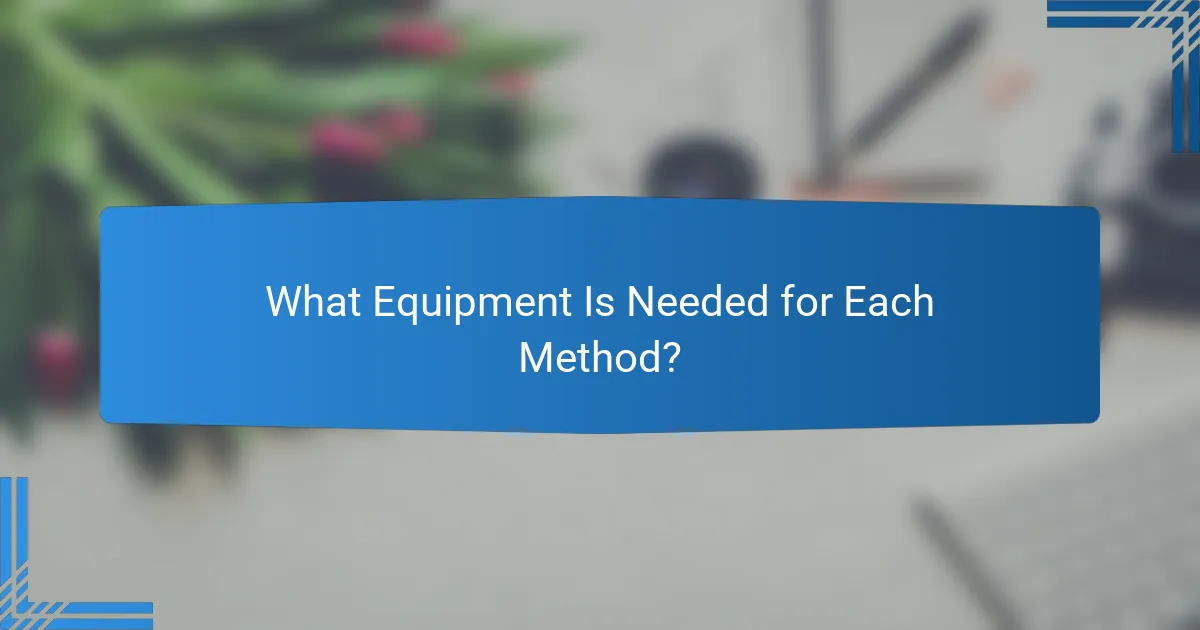
What Equipment Is Needed for Each Method?
To brew coffee using the pour over and French press methods, specific equipment is essential. The pour over method requires a dripper and filter, while the French press relies on a press pot to extract flavors effectively.
Pour Over requires a dripper and filter
The pour over method involves using a dripper, which is typically made of ceramic, glass, or plastic, along with a paper or metal filter. The dripper sits atop a carafe or mug, allowing brewed coffee to flow through the filter and into the container below.
When selecting a filter, ensure it fits your dripper type. Paper filters tend to produce a cleaner cup, while metal filters allow more oils and fine particles, resulting in a fuller flavor. Experimenting with different filter types can enhance your brewing experience.
French Press needs a press pot
The French press, also known as a press pot or plunger pot, consists of a cylindrical glass or stainless-steel container with a plunger and mesh filter. This design allows coffee grounds to steep in hot water, maximizing flavor extraction.
To use a French press, coarsely grind your coffee beans and add them to the pot. Pour hot water over the grounds, let it steep for several minutes, and then press down the plunger to separate the grounds from the brewed coffee. This method is straightforward and requires minimal equipment, making it a popular choice for many coffee enthusiasts.
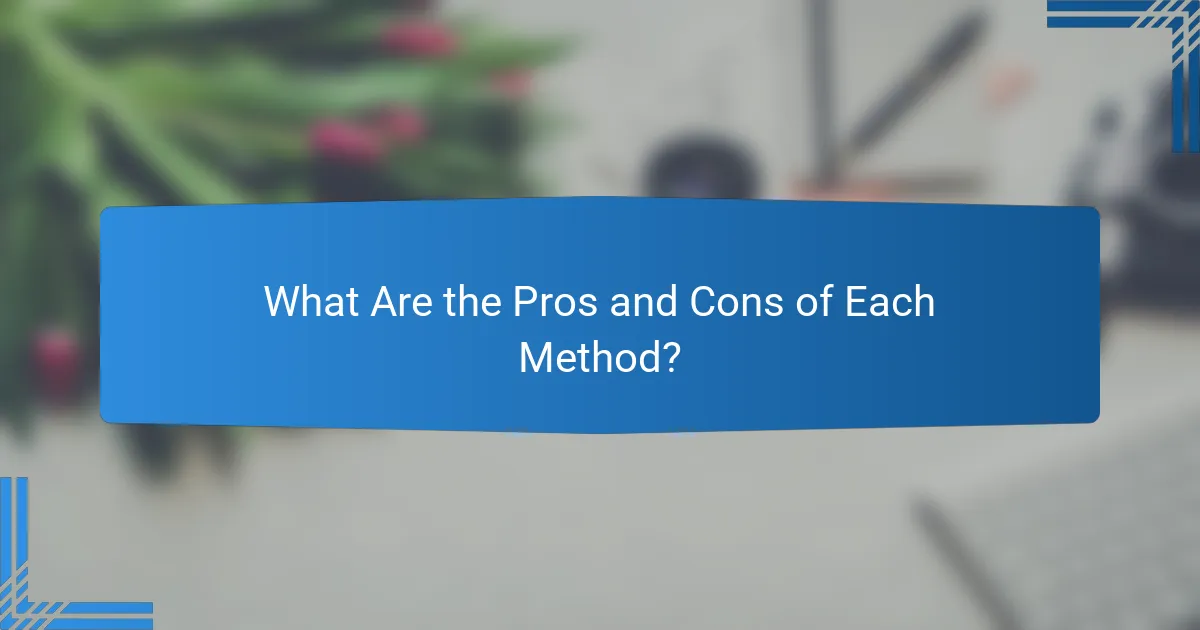
What Are the Pros and Cons of Each Method?
Pour over and French press are two popular coffee brewing methods, each with distinct advantages and disadvantages. Pour over offers precision and clarity in flavor, while French press provides a rich, full-bodied experience with minimal equipment.
Pour Over offers control and consistency
The pour over method allows for precise control over brewing variables such as water temperature, grind size, and brew time. This level of control can lead to a more consistent flavor profile, making it easier to replicate your favorite cup of coffee.
To achieve optimal results, use a gooseneck kettle for even pouring and a scale to measure coffee and water accurately. A typical brew time ranges from 2 to 4 minutes, depending on the coffee-to-water ratio and grind size.
French Press is easy and requires less equipment
The French press is known for its simplicity and minimal equipment needs, making it an accessible option for many coffee drinkers. With just a press pot and hot water, you can brew a rich and flavorful cup in about 4 minutes.
To use a French press, coarsely grind your coffee beans and steep them in hot water before pressing down the plunger. This method extracts oils and sediments, resulting in a fuller body and robust flavor. However, be mindful of potential sediment in your cup, which some may find unappealing.
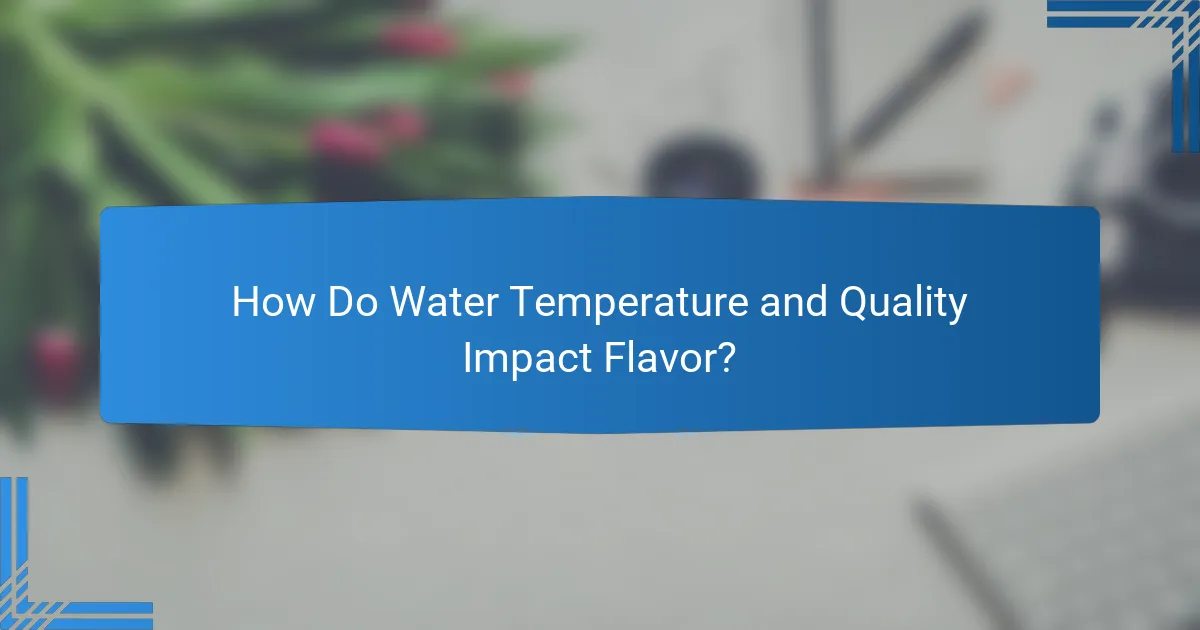
How Do Water Temperature and Quality Impact Flavor?
Water temperature and quality significantly influence the flavor profile of coffee brewed using either the pour over or French press methods. Optimal temperatures extract desirable compounds while minimizing bitterness, making it crucial to consider both factors for the best taste.
Pour Over benefits from precise water temperature
The pour over method thrives on precise water temperature, typically between 195°F and 205°F (90°C to 96°C). This range allows for optimal extraction of flavors, enhancing the coffee’s aroma and taste without introducing undesirable bitterness.
Using a thermometer can help maintain this temperature range. If the water is too hot, it can scorch the coffee grounds, while water that is too cool may result in under-extraction, leading to a flat flavor. Aim for a consistent temperature throughout the brewing process for the best results.
French Press can use a wider range of temperatures
In contrast, the French press method is more forgiving with water temperature, functioning well with a broader range of 190°F to 210°F (88°C to 99°C). This flexibility allows for a more relaxed brewing process, making it easier for home brewers to achieve good results without precise measurements.
However, using water that is too hot can still lead to over-extraction and bitterness. Aiming for the lower end of the range can yield a smoother cup, while higher temperatures may intensify bold flavors. Experimenting within this range can help you find your preferred taste profile.
